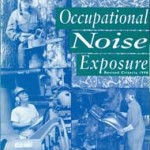It’s sad to say, but many construction companies have not yet started a formal hearing conservation program. Their solution is to purchase the best earplugs, for the lowest cost, and give them away like candy.
As I’ve mentioned before: Sometimes OSHA’s rules are protective (meaning: you will be safe) and other times they are really not on par with the health research. Hearing loss and OSHA’s method of measuring noise are NOT protective to employee health (your hearing). For the best method of measuring noise, look to the recommended guidelines of the ACGIH. In order to get the exact parameters, you must purchase their Guide to Occupational Exposure Values (TLVs) booklet. It hasn’t changed (at least for noise) for a few years, but it is still the most up to date on health for your hearing. Here’s a summary of some differences:
- Exchange rate (how noise doubles and is averaged over time)
- OSHA uses 5, ACGIH uses 3 >>which means noise doubles every 5, or 3 dB increase
- this makes a BIG difference in your accumulated average noise level (TWA).
- Exposure Limit, or Criterion Level
- OSHA says 90 dBA, ACGIH says 85 dBA
- Doesn’t seem too different (-5), but remember noise is logarithmic and it’s measured different by OSHA & the ACGIH
NIOSH also has some guidelines, which are very similar to the ACGIH.
There are some strong benefits to having a hearing conservation program. Here are some examples and suggestions for bettering your own program.
- You can be recognized
- Win an award.Â
- Have less (or even better: none) hearing loss claims
- What about just hearing soft noises? kids? hunting? sports? the TV?
If you have worked in construction for any period of time, you know how loud it can be, and how much exposure is out there. Don’t assume working in this industry that hearing loss will to happen to you. Do something about it. Here’s a presentation from CDC/NIOSH a few years back on how to start.
